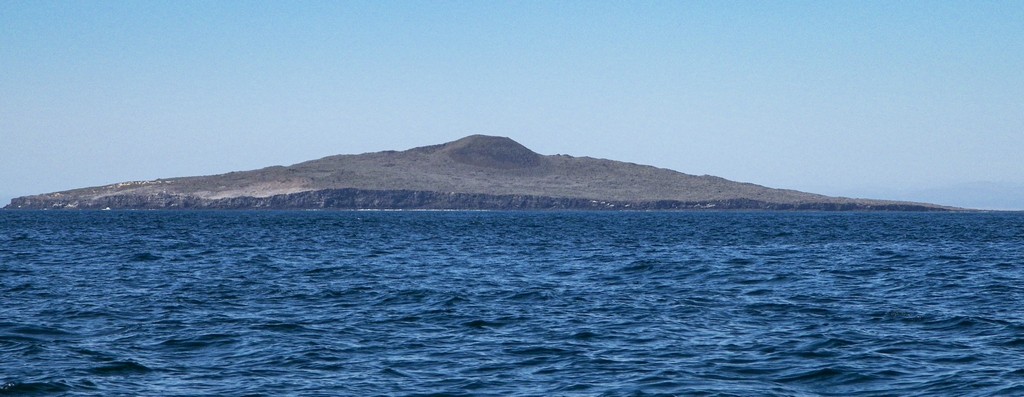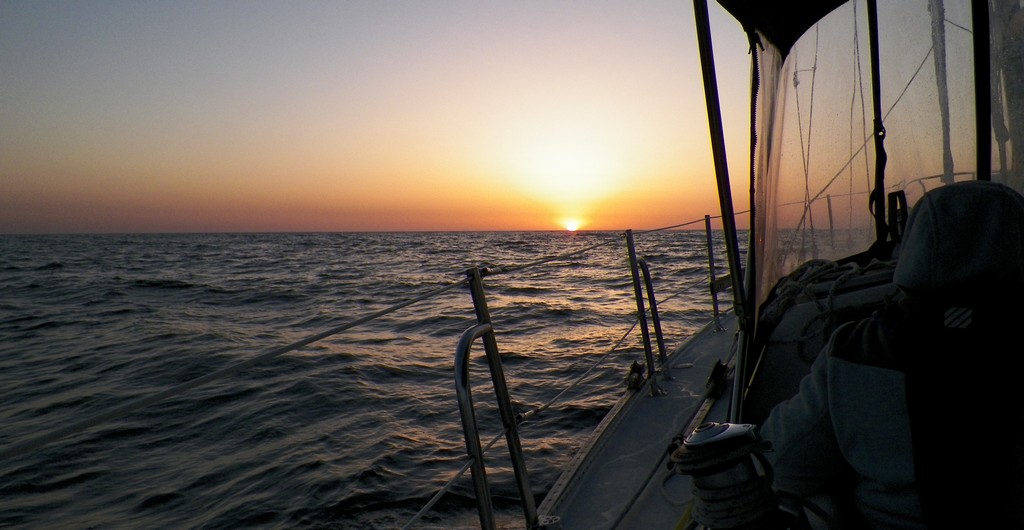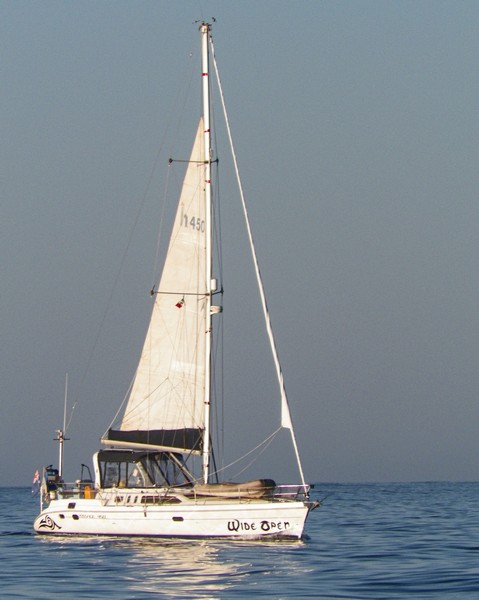Tuesday, 13 May 2014 – When I took over the watch at midnight, everything was quite calm. George took over the watch at 3:00 a.m. and at 3:45 a.m. we were 16 miles Southeast of San Carlos and seven miles offshore of the Sacramento reef. At 6:00 a.m. even though the sea was calm, we ran into some strong currents and the surface was confused from upwelling’s caused by the steep undersea contours and canyons of the continental shelf. The buffeting and lateral movement of the boat was noticeable, so we changed course to move us into deeper water, off the continental shelf and out of this undersea canyon area. An hour or two later things had calmed down. We again adjusted our course north staying nine miles offshore of Punta Baja which we passed at 10:00 a.m.
It is easy to see why this is a notorious area for wrecks and indeed the reef is named for the famous 1872 wreck of a 270′ side wheel passenger steamer which sank here with a great loss of life. In his book Sou’west in Wanderer lV, Eric Hiscock talks about the loss of the schooner ‘Goodwill’ and 12 hands on this same reef in 1969. Today, it is a popular fishing area and with GPS, not as notorious as it once was. As we passed almost seven miles to the West of the reef, we did see the very bright beacon marking its location.
During the day, the sea remained calm and while we still had 7-12 knots of wind on the ‘Nose’ we made slow but steady progress north against this and the current.
At 3:00 pm we passed Cabo San Quinten and shortly afterward, just north of San Quinten, a Hunter 45 sailboat called ‘Wide Open’ with either an Australian or New Zealand flag passed us, crossed our bow twice and then headed off to the Northwest only catch us up about an hour later. They did not respond to any of the regular VHF channels. While they were within waving distance, they never acknowledged our presence and eventually fell back. This is unusual behavior for sailboats meeting each other in a remote ocean area. By 4:00 p.m. we had covered 166 miles since leaving our anchorage off Cedros Island and by 5:00 p.m. we passed just a mile offshore of Isla San Martin, an extinct volcano.

The evening wind north of Isla San Martin had us bouncing in a sea stirred up by 20 knot winds which were once again on our ‘nose.’ We changed direction for a while so we could sail however after three hours the wind died, we changed course and went back to motor sailing.
As Anita came on watch at midnight, we were 6 miles offshore of Punta Colnett and had covered 212 miles since leaving Cedros.


